The Importance of Water Filtration
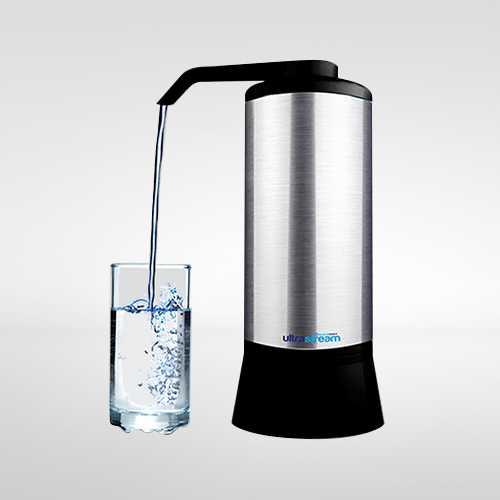
We all know that access to clean, freshwater is fundamental to our health and wellbeing, and filtering our water ensures that this is achieved. Most water filters remove harmful chemicals and bacteria, which if consumed can cause diseases and general ill-health. There are many other benefits of filtered water, including a better taste, and being more cost-effective and environmentally friendly when compared to buying bottled water.
Water Quality in Australia
Although the Australian government is required to provide us with safe drinking water, we are still at risk of temporary contaminants such as chemicals, heavy metals, pesticides, bacteria, and so on. A resident of an outback town recently found that the chlorine levels in her drinking water were consistent to those in her swimming pool – read the full story here. Chlorine is used in waterways to eliminate harmful micro-organisms, but this can be detrimental to our health when over-contamination and resulting consumption occurs. For this reason, along with many others, it’s important to filter your water.
What Some Water Filters don’t do…
While water filters remove the majority of contaminates, it’s important to be aware that different filters have different results. Some filters don’t stop all harmful bacteria and chemicals. If you are supplied by tank water and have a water filtration system and aren’t sure if you’re fully protected, the simplest and most effective way of ensuring that your water is safe and clean is by combining it with water disinfectant product. Our CleanOxide water sanitization tablets are great for use in water tanks – view here. We also provide testing kits to ensure your water is safe to drink, you can view these here.
UltraStream Water Filter & Hydrogen Rich Water Ionizer
The UltraStream is the world’s most advanced Water filter unit. It purifies, alkalizes, ionizes and infuses the water with molecular hydrogen. And… it’s extremely affordable!
If you don’t have a water filtration system currently installed in your home, we recommend using the new UltraStream Hydrogen Rich Water Ionizer. Simply put, it is a better, simpler, far more affordable way to alkalize, ionize and purify water. Benefits of this system include:
- Removes Fluoride, Chlorine, Chloramines, Heavy Metals and much more
- Adds Beneficial Alkaline Minerals
- Produces Alkaline Ionized Water
- Molecular hydrogen production
- Tested for the life of the filter
- Fits most kitchen taps or can be installed under the sink with under-sink conversion kit
- Designed in Australia and tested for Australian water conditions
- 3 Year Warranty
Contact us for more information.…
How to Tell Cockroaches and Waterbugs Apart
What Is a Waterbug?
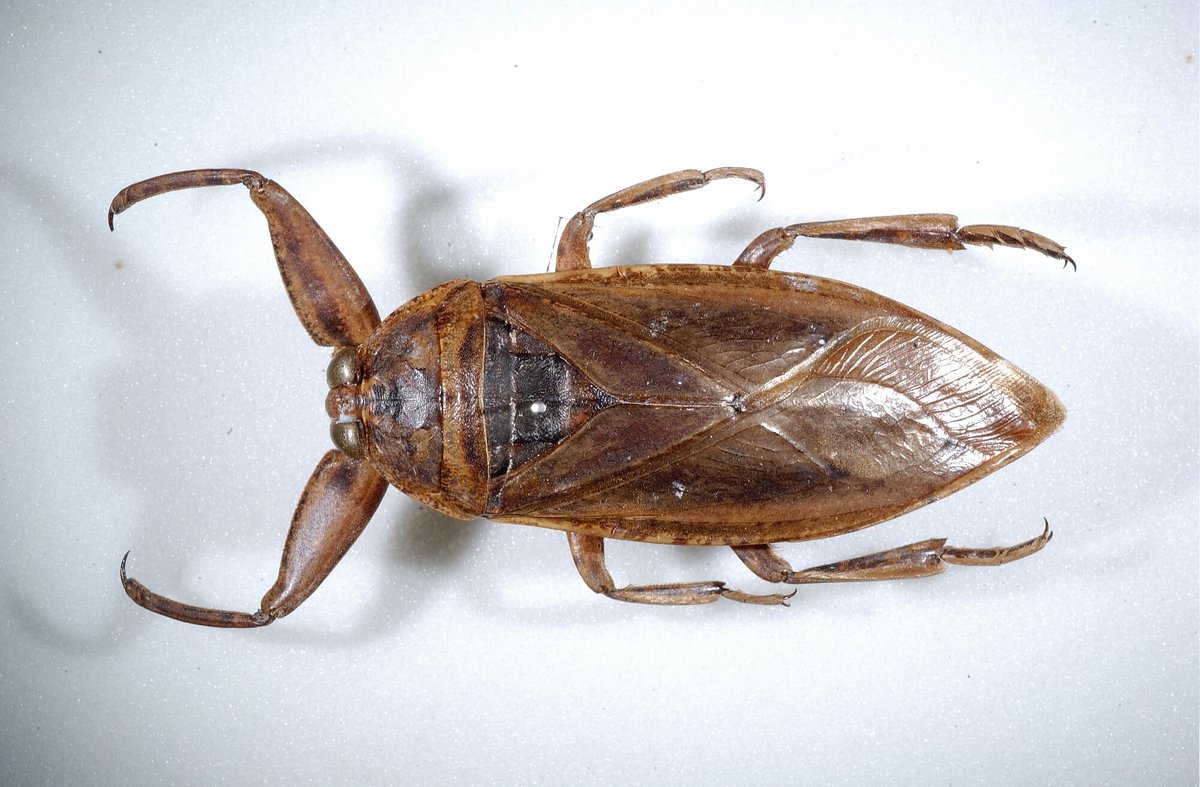
Although many people refer to various cockroach species as waterbugs, the true water bug is an aquatic insect classified under the order Hemiptera. Water boatmen and water scorpions are true bugs that live in water. Their legs are used as paddles to move through water. Members of the Gerridae family, such as water striders, pond skaters and water spiders, are also water bugs. However, instead of using their legs as paddles, they make use of surface tension to stay afloat.
Oriental Cockroach vs. Waterbug
One common example of an insect that is referred to as a waterbug is actually the oriental cockroach (Blatta orientalis). Contrary to its name, the oriental cockroach is native to Africa. Oriental cockroaches (water bugs) are shiny and black or dark brown in color. Nymphs of the species are smaller. Adult males are smaller than females. Oriental cockroaches do not have full-sized wings, and they are unable to fly.
Attracted to Warm, Damp Places
In warm weather, oriental cockroaches can be found outside in trash cans and sewers. In colder seasons, they migrate inside seeking warmth. They are most commonly located in basements and other damp areas at or below ground level. Oriental cockroaches have seasonal development cycles, with adults emerging in warm seasons.
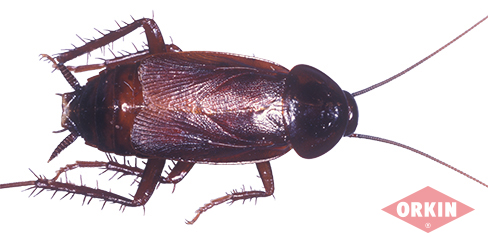
Water is a Necessity
Like most other cockroaches, the oriental cockroach can eat many foods it happens upon. It is especially fond of starchy foods and decaying plant and animal matter. Given enough water, oriental cockroaches can survive up to one month without food. However, they cannot survive more than two weeks without water.
Diseases & Problems
Cockroaches are adaptable insects. Although they gather in warm, moist areas, they are not aquatic like true waterbugs. Cockroaches are scavengers who consume any organic food source available to them. These insects normally are nocturnal and hide in crevices during the day. Cockroaches are capable of spreading human disease and triggering allergies and asthma. Oriental cockroaches can spread contaminants which can cause diarrhea and food poisoning. They are attracted to food sources indoors and require a science-based solution tailored to each home to best control them. In order to get rid of a cockroach infestation, contact your local pest control professional. Contact us for more information.…
Pesticides and Water Pollution
ESTICIDES AND WATER POLLUTION FACT SHEET
The term “pesticide” is a composite term that includes all chemicals that are used to kill or control pests. Pesticides are used to protect crops against insects, weeds, fungi, and other pests. They also play a significant role in food production. They protect or increase yields, and the number of times per year a crop can be grown on the same land. In agriculture, this includes herbicides (weeds), insecticides (insects), fungicides (fungi), nematocides (nematodes), and rodenticides (vertebrate poisons).
PESTICIDE FACTS
- Pesticides are potentially toxic to humans and can have both acute and chronic health effects, depending on the quantity and the ways in which a person is exposed.
- Some of the older, cheaper pesticides can remain in the soil and water for years. They have been banned in developed countries for agricultural use but are still used in many developing countries.
- There are more than 1,000 pesticides used around the world to ensure food is not damaged or destroyed by pests. Each pesticide has different properties and toxicological effects (and the toxicological effects of multiple pesticides can be greater than the sum of their parts).
FACTORS AFFECTING PESTICIDE POLLUTION OF WATER
Drainage: Farmland is often well drained and natural drainage is often enhanced by land drains. Water from excessive rainfall and irrigation cannot always be held within the soil structure. Therefore, pesticides and residues (also nitrates and phosphates) can be quickly transported to contaminate ground water and freshwater supplies over a large geographical area.
The pesticide: Individual pesticides have unique properties, and many variable factors (including those below) determine the specific risk in terms of water pollution.
- active ingredient(s) in the pesticide formulation
- contaminants that exist as impurities in the active ingredient(s)
- additives that are mixed with the active ingredient(s) (wetting agents, diluents or solvents, extenders, adhesives, buffers, preservatives, and emulsifiers)
- degradate that is formed during chemical, microbial, or photochemical degradation of the active ingredient
- Pesticide half-life: The more stable the pesticide, the longer it takes to break down. This can be measured in terms of its half-life, the longer it takes to break down, the higher its persistence. The half-life is unique to individual products but variable depending on specific environmental and application factors.
An active substance is any chemical, plant extract, pheromone, or microorganism (including viruses), that has action against ‘pests’ or on plants, or parts of plants or plant products.
Mobility in soil: All pesticides have unique mobility properties, both vertically and horizontally through the soil structure. Residual herbicides applied directly to the soil are designed to bond to the soil structure.
Solubility in water: Many pesticides are soluble in water out of necessity so that they can be applied with water and be absorbed by the target. The higher the solubility of the pesticide, the higher the risk of leaching. Residual herbicides are generally of lower solubility to aid soil binding but their persistency in the soil can cause other problems.
Microbial activity: Pesticides in the soil are primarily broken down by microbial activity. The greater the microbial activity, the faster the degradation. Loss of pesticide residues can also occur by evaporation and photodecomposition.
Soil temperature: Soil microbial activity and pesticide breakdown is largely linked to soil temperature.
Application rate: The more pesticide that is applied, the longer significant concentrations remain.
Irrigation Management: Irrigation increases the chance that pesticides will migrate to ground water and surface water. Irrigating saturated soils or irrigating at a rate that exceeds the infiltration rate of soil promotes runoff that can carry pesticides with it. Irrigation that promotes the frequent downward movement of water beyond the root zone of plants also promotes the leaching of substances including pesticides to ground water. This is of particular concern in areas where frequent irrigation is necessary because of coarse-textured soils. Proper irrigation management is critical to minimize the risk of pesticides infiltrating ground water.
Another factor affecting pesticide pollution of water is rainfall, as high levels of rainfall increase the risk of pesticides contaminating water. Movement into bodies of water occurs when runoff, after rainfall, moves through areas that have been sprayed with pesticides. It can also occur within the soil structure by displacement of pesticides from absorption sites near water and through treated soil that has moved into the water through soil erosion.
GROUND WATER
The Cornell University Cooperative Extension states “cleanup of groundwater contaminated by pesticides is usually impossible. The slow movement of groundwater means that it may take decades for the contaminated water to flow beyond the affected wells. Determining which wells will be affected and for how long is a difficult problem.”
They also observed the problem with private wells and state that “most family farms rely on their own wells and private wells are rarely tested or treated and in many instances are located close to fields on which pesticides have been applied. While not all wells can become contaminated, it is important to know why some become contaminated (leached) and why others do not.”
The Cornell University states:
Leaching of pesticides depends in part on the amount applied per acre per year; where, when and how it is applied; the solubility of the compound: how strongly it is held by the soil; and how quickly it breaks down in the root zone. After a pesticide is applied to a field, it meets a variety of fates. Some may be lost to the atmosphere through volatilization, carried away to surface waters by runoff, or broken down in the sunlight by photolysis. Pesticides in soil may be taken up by plants, degraded into other chemical forms, or leached downward, possibly to groundwater. The remainder is retained in the soil and continues to be available for plant uptake, degradation or leaching.
How much pesticide meets each of these fates depends on many factors including:
- the properties of the pesticide
- the properties of the soil
- the site conditions including climate
- management practices
Many pesticides bind strongly to soil and are, therefore, immobile. For those that are mobile in soil, their leaching to ground water can be thought of as a race in time between their degradation into nontoxic by-products and their transport to ground water. If the pesticide is not readily degraded and moved freely with water percolating downward through the soil, the likelihood of it reaching ground water is relatively high. If, however, the pesticide degrades quickly or is tightly bound to soil particles, then it is more likely to be retained in the upper soil layers until it is degraded to nontoxic by-products.
In the U.S., about 10% of the country’s population (approximately 13 million people) rely on water from private wells but the private wells are not regulated under the Safe Drinking Water Act (SDWA). The SDWA does not provide recommended criteria or standards for individual wells, but it does provide information about technologies that may be used to treat or remove any contaminants. It also educates well owners on ground water and provides them with information that is useful to them in protecting their health.
THE EFFECTS OF PESTICIDES
The health effects of pesticides depend on the type of pesticide. Some, such as the organophosphates and carbamates, affect the nervous …
Pesticides and Water Pollution
PESTICIDES AND WATER POLLUTION FACT SHEET
The term “pesticide” is a composite term that includes all chemicals that are used to kill or control pests. Pesticides are used to protect crops against insects, weeds, fungi, and other pests. They also play a significant role in food production. They protect or increase yields, and the number of times per year a crop can be grown on the same land. In agriculture, this includes herbicides (weeds), insecticides (insects), fungicides (fungi), nematocides (nematodes), and rodenticides (vertebrate poisons).
PESTICIDE FACTS
- Pesticides are potentially toxic to humans and can have both acute and chronic health effects, depending on the quantity and the ways in which a person is exposed.
- Some of the older, cheaper pesticides can remain in the soil and water for years. They have been banned in developed countries for agricultural use but are still used in many developing countries.
- There are more than 1,000 pesticides used around the world to ensure food is not damaged or destroyed by pests. Each pesticide has different properties and toxicological effects (and the toxicological effects of multiple pesticides can be greater than the sum of their parts).
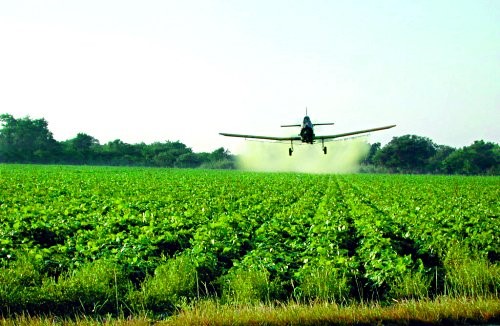
FACTORS AFFECTING PESTICIDE POLLUTION OF WATER
Drainage: Farmland is often well drained and natural drainage is often enhanced by land drains. Water from excessive rainfall and irrigation cannot always be held within the soil structure. Therefore, pesticides and residues (also nitrates and phosphates) can be quickly transported to contaminate ground water and freshwater supplies over a large geographical area.
The pesticide: Individual pesticides have unique properties, and many variable factors (including those below) determine the specific risk in terms of water pollution.
- active ingredient(s) in the pesticide formulation
- contaminants that exist as impurities in the active ingredient(s)
- additives that are mixed with the active ingredient(s) (wetting agents, diluents or solvents, extenders, adhesives, buffers, preservatives, and emulsifiers)
- degradate that is formed during chemical, microbial, or photochemical degradation of the active ingredient
- Pesticide half-life: The more stable the pesticide, the longer it takes to break down. This can be measured in terms of its half-life, the longer it takes to break down, the higher its persistence. The half-life is unique to individual products but variable depending on specific environmental and application factors.
An active substance is any chemical, plant extract, pheromone, or microorganism (including viruses), that has action against ‘pests’ or on plants, or parts of plants or plant products.
Mobility in soil: All pesticides have unique mobility properties, both vertically and horizontally through the soil structure. Residual herbicides applied directly to the soil are designed to bond to the soil structure.
Solubility in water: Many pesticides are soluble in water out of necessity so that they can be applied with water and be absorbed by the target. The higher the solubility of the pesticide, the higher the risk of leaching. Residual herbicides are generally of lower solubility to aid soil binding but their persistency in the soil can cause other problems.
Microbial activity: Pesticides in the soil are primarily broken down by microbial activity. The greater the microbial activity, the faster the degradation. Loss of pesticide residues can also occur by evaporation and photodecomposition.
Soil temperature: Soil microbial activity and pesticide breakdown is largely linked to soil temperature.
Application rate: The more pesticide that is applied, the longer significant concentrations remain.
Irrigation Management: Irrigation increases the chance that pesticides will migrate to ground water and surface water. Irrigating saturated soils or irrigating at a rate that exceeds the infiltration rate of soil promotes runoff that can carry pesticides with it. Irrigation that promotes the frequent downward movement of water beyond the root zone of plants also promotes the leaching of substances including pesticides to ground water. This is of particular concern in areas where frequent irrigation is necessary because of coarse-textured soils. Proper irrigation management is critical to minimize the risk of pesticides infiltrating ground water.
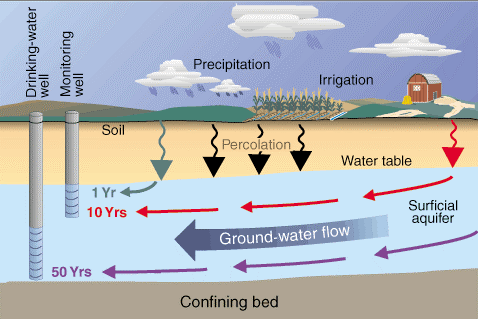
Another factor affecting pesticide pollution of water is rainfall, as high levels of rainfall increase the risk of pesticides contaminating water. Movement into bodies of water occurs when runoff, after rainfall, moves through areas that have been sprayed with pesticides. It can also occur within the soil structure by displacement of pesticides from absorption sites near water and through treated soil that has moved into the water through soil erosion.
GROUND WATER
The Cornell University Cooperative Extension states “cleanup of groundwater contaminated by pesticides is usually impossible. The slow movement of groundwater means that it may take decades for the contaminated water to flow beyond the affected wells. Determining which wells will be affected and for how long is a difficult problem.”
They also observed the problem with private wells and state that “most family farms rely on their own wells and private wells are rarely tested or treated and in many instances are located close to fields on which pesticides have been applied. While not all wells can become contaminated, it is important to know why some become contaminated (leached) and why others do not.”
The Cornell University states:
Leaching of pesticides depends in part on the amount applied per acre per year; where, when and how it is applied; the solubility of the compound: how strongly it is held by the soil; and how quickly it breaks down in the root zone. After a pesticide is applied to a field, it meets a variety of fates. Some may be lost to the atmosphere through volatilization, carried away to surface waters by runoff, or broken down in the sunlight by photolysis. Pesticides in soil may be taken up by plants, degraded into other chemical forms, or leached downward, possibly to groundwater. The remainder is retained in the soil and continues to be available for plant uptake, degradation or leaching.
How much pesticide meets each of these fates depends on many factors including:
- the properties of the pesticide
- the properties of the soil
- the site conditions including climate
- management practices
Many pesticides bind strongly to soil and are, therefore, immobile. For those that are mobile in soil, their leaching to ground water can be thought of as a race in time between their degradation into nontoxic by-products and their transport to ground water. If the pesticide is not readily degraded and moved freely with water percolating downward through the soil, the likelihood of it reaching ground water is relatively high. If, however, the pesticide degrades quickly or is tightly bound to soil particles, then it is more likely to be retained in the upper soil layers until it is degraded to nontoxic by-products.
In the U.S., about 10% of the country’s population (approximately 13 million people) rely on water from private wells but the private wells are not regulated under the Safe Drinking Water Act (SDWA). The SDWA does not provide recommended criteria or standards for individual wells, but it does provide information about technologies that may be used to treat or remove any contaminants. It also educates well owners on ground water and provides them with information that is useful to them in protecting their health.
THE EFFECTS OF PESTICIDES
The health effects of pesticides depend on the type of pesticide. Some, such as the organophosphates and …
Test Post
Lorem ipsum dolor sit amet, consectetur adipiscing elit. Praesent eros lacus, accumsan sit amet iaculis et, varius ac metus. Cras imperdiet porttitor lacus eu lobortis. Aliquam vel metus at felis tincidunt ultrices et ac nulla. Nam non consectetur ligula, id mattis elit. Quisque eget massa ipsum. Nam vitae blandit quam. Quisque auctor tincidunt dui quis tempor. Sed rutrum purus nec fermentum pretium. Nam sem est, congue vitae ante vitae, viverra consequat turpis. Sed finibus quam leo, et dictum nibh mollis ac. Suspendisse consectetur, lectus sollicitudin elementum finibus, diam risus porta arcu, quis sodales risus massa quis erat.
Etiam lacus risus, blandit quis quam ut, dictum pellentesque sapien. Maecenas lobortis elit eu mi cursus egestas. Quisque faucibus nisi sit amet sapien lobortis vehicula ut et velit. Praesent sit amet urna et dui fringilla pharetra ac sed mi. Nulla mauris tellus, scelerisque ac sodales in, finibus in felis. Integer rhoncus mauris lorem. Donec eget nunc libero. Sed neque nisi, hendrerit vitae enim vel, eleifend porta nulla. Nullam pulvinar nibh quis viverra consectetur. Etiam molestie accumsan libero, quis laoreet odio lobortis dictum. Aliquam nec lacus ligula. Suspendisse vestibulum sagittis dui, et laoreet odio aliquam id. Proin in nibh at turpis placerat porta. Donec imperdiet fringilla nisi, non gravida velit porta quis.
Maecenas quis ipsum pretium, congue libero ac, blandit odio. Sed id erat ac nunc tristique interdum congue vitae nisl. Ut sit amet libero nec dolor euismod pharetra. Nam varius metus vitae finibus euismod. Nulla facilisi. Ut lacinia, ipsum a venenatis fringilla, ex ex bibendum urna, non molestie quam purus eu lacus. Nunc ac felis gravida, posuere nibh sit amet, facilisis ipsum. Sed augue justo, pharetra vitae libero eget, ullamcorper fringilla augue. Aenean eu rutrum ligula, in feugiat ligula. Pellentesque non pharetra quam, vitae posuere nibh. Integer non nunc congue, dictum mauris vel, sollicitudin risus. Nunc rutrum leo in turpis tincidunt commodo. Pellentesque habitant morbi tristique senectus et netus et malesuada fames ac turpis egestas. Aenean pretium efficitur dolor.
Vestibulum suscipit erat lorem, in interdum lectus lacinia ut. Nulla facilisi. Donec vehicula lacus a turpis tristique, elementum tempus tortor iaculis. Nulla consectetur erat est, nec sagittis dui suscipit non. Aenean non maximus dui. Maecenas ac finibus arcu. Fusce eleifend lectus mi, feugiat tincidunt mi pharetra in. Donec vitae ultricies neque, id pharetra nisi. Lorem ipsum dolor sit amet, consectetur adipiscing elit. Pellentesque viverra nulla mi, sit amet congue urna mollis ac. Vestibulum tristique vehicula sem, sed dictum justo pharetra id. Vestibulum nec varius mi. Donec eget metus vitae diam molestie elementum ac eu massa. Aenean pretium viverra hendrerit. Nam metus magna, commodo vel lorem id, iaculis porttitor nisl. Orci varius natoque penatibus et magnis dis parturient montes, nascetur ridiculus mus.
Suspendisse quis erat ipsum. Ut aliquet ultrices iaculis. Etiam malesuada fringilla magna, non sodales diam iaculis non. Pellentesque habitant morbi tristique senectus et netus et malesuada fames ac turpis egestas. Maecenas non orci ipsum. Quisque ac mauris est. Quisque porta mauris ligula, et egestas purus dignissim sed. Nunc accumsan non enim a imperdiet.…
Just a Dummy Post
Lorem ipsum dolor sit amet, consectetur adipiscing elit. Praesent eros lacus, accumsan sit amet iaculis et, varius ac metus. Cras imperdiet porttitor lacus eu lobortis. Aliquam vel metus at felis tincidunt ultrices et ac nulla. Nam non consectetur ligula, id mattis elit. Quisque eget massa ipsum. Nam vitae blandit quam. Quisque auctor tincidunt dui quis tempor. Sed rutrum purus nec fermentum pretium. Nam sem est, congue vitae ante vitae, viverra consequat turpis. Sed finibus quam leo, et dictum nibh mollis ac. Suspendisse consectetur, lectus sollicitudin elementum finibus, diam risus porta arcu, quis sodales risus massa quis erat.
Etiam lacus risus, blandit quis quam ut, dictum pellentesque sapien. Maecenas lobortis elit eu mi cursus egestas. Quisque faucibus nisi sit amet sapien lobortis vehicula ut et velit. Praesent sit amet urna et dui fringilla pharetra ac sed mi. Nulla mauris tellus, scelerisque ac sodales in, finibus in felis. Integer rhoncus mauris lorem. Donec eget nunc libero. Sed neque nisi, hendrerit vitae enim vel, eleifend porta nulla. Nullam pulvinar nibh quis viverra consectetur. Etiam molestie accumsan libero, quis laoreet odio lobortis dictum. Aliquam nec lacus ligula. Suspendisse vestibulum sagittis dui, et laoreet odio aliquam id. Proin in nibh at turpis placerat porta. Donec imperdiet fringilla nisi, non gravida velit porta quis.
Maecenas quis ipsum pretium, congue libero ac, blandit odio. Sed id erat ac nunc tristique interdum congue vitae nisl. Ut sit amet libero nec dolor euismod pharetra. Nam varius metus vitae finibus euismod. Nulla facilisi. Ut lacinia, ipsum a venenatis fringilla, ex ex bibendum urna, non molestie quam purus eu lacus. Nunc ac felis gravida, posuere nibh sit amet, facilisis ipsum. Sed augue justo, pharetra vitae libero eget, ullamcorper fringilla augue. Aenean eu rutrum ligula, in feugiat ligula. Pellentesque non pharetra quam, vitae posuere nibh. Integer non nunc congue, dictum mauris vel, sollicitudin risus. Nunc rutrum leo in turpis tincidunt commodo. Pellentesque habitant morbi tristique senectus et netus et malesuada fames ac turpis egestas. Aenean pretium efficitur dolor.
Vestibulum suscipit erat lorem, in interdum lectus lacinia ut. Nulla facilisi. Donec vehicula lacus a turpis tristique, elementum tempus tortor iaculis. Nulla consectetur erat est, nec sagittis dui suscipit non. Aenean non maximus dui. Maecenas ac finibus arcu. Fusce eleifend lectus mi, feugiat tincidunt mi pharetra in. Donec vitae ultricies neque, id pharetra nisi. Lorem ipsum dolor sit amet, consectetur adipiscing elit. Pellentesque viverra nulla mi, sit amet congue urna mollis ac. Vestibulum tristique vehicula sem, sed dictum justo pharetra id. Vestibulum nec varius mi. Donec eget metus vitae diam molestie elementum ac eu massa. Aenean pretium viverra hendrerit. Nam metus magna, commodo vel lorem id, iaculis porttitor nisl. Orci varius natoque penatibus et magnis dis parturient montes, nascetur ridiculus mus.
Suspendisse quis erat ipsum. Ut aliquet ultrices iaculis. Etiam malesuada fringilla magna, non sodales diam iaculis non. Pellentesque habitant morbi tristique senectus et netus et malesuada fames ac turpis egestas. Maecenas non orci ipsum. Quisque ac mauris est. Quisque porta mauris ligula, et egestas purus dignissim sed. Nunc accumsan non enim a imperdiet.…
Another Dummy Post
Lorem ipsum dolor sit amet, consectetur adipiscing elit. Praesent eros lacus, accumsan sit amet iaculis et, varius ac metus. Cras imperdiet porttitor lacus eu lobortis. Aliquam vel metus at felis tincidunt ultrices et ac nulla. Nam non consectetur ligula, id mattis elit. Quisque eget massa ipsum. Nam vitae blandit quam. Quisque auctor tincidunt dui quis tempor. Sed rutrum purus nec fermentum pretium. Nam sem est, congue vitae ante vitae, viverra consequat turpis. Sed finibus quam leo, et dictum nibh mollis ac. Suspendisse consectetur, lectus sollicitudin elementum finibus, diam risus porta arcu, quis sodales risus massa quis erat.
Etiam lacus risus, blandit quis quam ut, dictum pellentesque sapien. Maecenas lobortis elit eu mi cursus egestas. Quisque faucibus nisi sit amet sapien lobortis vehicula ut et velit. Praesent sit amet urna et dui fringilla pharetra ac sed mi. Nulla mauris tellus, scelerisque ac sodales in, finibus in felis. Integer rhoncus mauris lorem. Donec eget nunc libero. Sed neque nisi, hendrerit vitae enim vel, eleifend porta nulla. Nullam pulvinar nibh quis viverra consectetur. Etiam molestie accumsan libero, quis laoreet odio lobortis dictum. Aliquam nec lacus ligula. Suspendisse vestibulum sagittis dui, et laoreet odio aliquam id. Proin in nibh at turpis placerat porta. Donec imperdiet fringilla nisi, non gravida velit porta quis.
Maecenas quis ipsum pretium, congue libero ac, blandit odio. Sed id erat ac nunc tristique interdum congue vitae nisl. Ut sit amet libero nec dolor euismod pharetra. Nam varius metus vitae finibus euismod. Nulla facilisi. Ut lacinia, ipsum a venenatis fringilla, ex ex bibendum urna, non molestie quam purus eu lacus. Nunc ac felis gravida, posuere nibh sit amet, facilisis ipsum. Sed augue justo, pharetra vitae libero eget, ullamcorper fringilla augue. Aenean eu rutrum ligula, in feugiat ligula. Pellentesque non pharetra quam, vitae posuere nibh. Integer non nunc congue, dictum mauris vel, sollicitudin risus. Nunc rutrum leo in turpis tincidunt commodo. Pellentesque habitant morbi tristique senectus et netus et malesuada fames ac turpis egestas. Aenean pretium efficitur dolor.
Vestibulum suscipit erat lorem, in interdum lectus lacinia ut. Nulla facilisi. Donec vehicula lacus a turpis tristique, elementum tempus tortor iaculis. Nulla consectetur erat est, nec sagittis dui suscipit non. Aenean non maximus dui. Maecenas ac finibus arcu. Fusce eleifend lectus mi, feugiat tincidunt mi pharetra in. Donec vitae ultricies neque, id pharetra nisi. Lorem ipsum dolor sit amet, consectetur adipiscing elit. Pellentesque viverra nulla mi, sit amet congue urna mollis ac. Vestibulum tristique vehicula sem, sed dictum justo pharetra id. Vestibulum nec varius mi. Donec eget metus vitae diam molestie elementum ac eu massa. Aenean pretium viverra hendrerit. Nam metus magna, commodo vel lorem id, iaculis porttitor nisl. Orci varius natoque penatibus et magnis dis parturient montes, nascetur ridiculus mus.
Suspendisse quis erat ipsum. Ut aliquet ultrices iaculis. Etiam malesuada fringilla magna, non sodales diam iaculis non. Pellentesque habitant morbi tristique senectus et netus et malesuada fames ac turpis egestas. Maecenas non orci ipsum. Quisque ac mauris est. Quisque porta mauris ligula, et egestas purus dignissim sed. Nunc accumsan non enim a imperdiet.…
What are the essential services of a Pest Control Company?
Are you suffering a lot due to pest issues in your house or office premises? It is common for all of us to suffer a lot due to the pest issues in our place. Do you know the meaning of pest? Any animal or plant that causes severe damage or harm humans is called a pest. The pest is the major disturbance to people by affecting their health and property to a greater extent. The major pests are ants, cockroaches, mosquitoes, rats, flies, fleas, wasps, bedbugs, rodents, etc. The pest problem is a devastating issue for all humans from across the globe. The pest causes continuous trouble and also severe money loss to an individual
How to select the pest control company?
Pest controlling is not an easy task by an individual, but it is a daunting task to all Yes, controlling pests at the premises of an individual or office need a technical expert who deals with pests. Hence, it is of utmost importance to contact a pest control company like P…